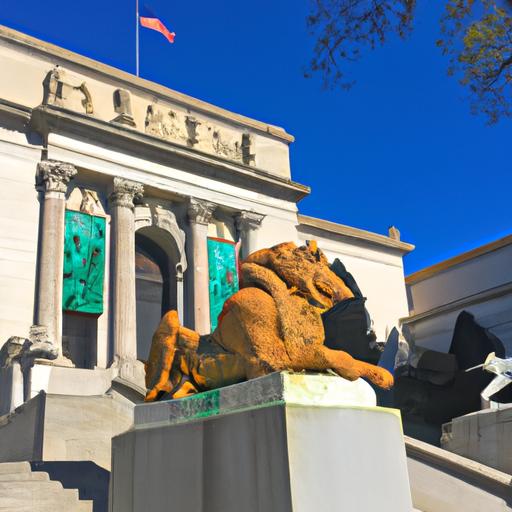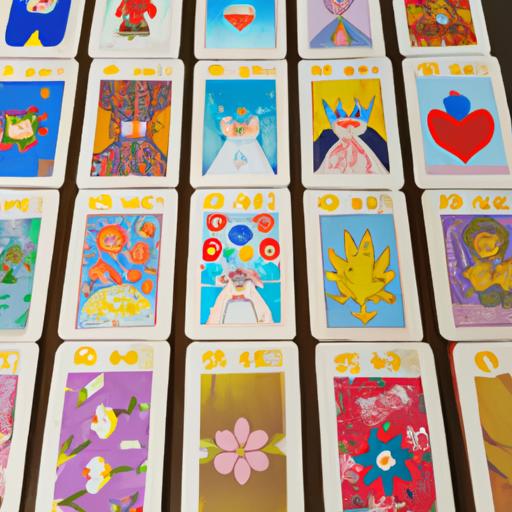Introduction
Art has always been a captivating form of expression, transcending time and evolving with technology. In today’s digital age, we find ourselves immersed in a world where traditional art meets its digital counterpart. But the burning question remains: does traditional art sell more than digital? Let’s embark on a journey to unravel the intricacies of the art market and explore the sales dynamics between these two captivating art forms.
Artists and art enthusiasts alike are constantly pondering this age-old conundrum. To gain a clear understanding, we must first grasp the essence of traditional and digital art. Traditional art encompasses the conventional mediums and techniques passed down through generations, while digital art thrives in the realm of pixels and algorithms.
Traditional Art: Overview and Market Analysis
Traditional art holds a rich heritage, rooted in centuries of human creativity. The strokes of a paintbrush or the chisel against stone have mesmerized audiences for ages. Its historical significance and timeless allure have garnered a steadfast following. Yet, in this ever-evolving world, it is essential to examine the market analysis of traditional art sales.
The traditional art market is influenced by various factors, including cultural heritage, prestige, and the exclusivity of owning an original piece. Art collectors and connoisseurs seek the tangible and unique nature of traditional art, appreciating the craftsmanship and emotional connection it evokes. Sales figures reflect the enduring popularity of traditional art, with notable growth rates observed in recent years.
Stay tuned for the next section, where we delve into the world of digital art and analyze its market trends. Can the digital realm compete with the allure of traditional art? Let’s uncover the truth together.
Digital Art: Overview and Market Analysis
Digital art, a product of the digital revolution, has revolutionized the way we perceive and create art. As we dive into the realm of digital art, let’s explore its definition, characteristics, and its emergence in the art world.
A. Definition and Characteristics of Digital Art
Digital art encompasses various creative expressions that utilize digital technologies. It encompasses a wide range of mediums, including digital paintings, computer-generated imagery (CGI), multimedia installations, and interactive art. The digital format allows artists to explore new dimensions, leveraging software tools and digital platforms to bring their visions to life.
B. Emergence and Development of Digital Art
The emergence of digital art can be traced back to the advent of computers and the rapid advancement of technology. Artists began experimenting with digital tools, pushing the boundaries of traditional art forms. Digital art gained recognition as a legitimate art form in the late 20th century, with pioneers like Harold Cohen and Vera Molnar paving the way for its acceptance and development.
C. Market Analysis of Digital Art Sales
The market for digital art has witnessed substantial growth in recent years, fueled by technological advancements and a growing digital art community. Various factors influence trends in the digital art market, including accessibility, global reach, and the democratization of the art world through online platforms. Sales figures indicate a significant increase in demand for digital art, with a steady growth rate that showcases its rising popularity.
Stay tuned for the next section, where we explore the pros and cons of traditional art sales, analyzing its advantages and disadvantages in the evolving art market landscape.
Pros and Cons of Traditional Art Sales
A. Advantages of selling traditional art
Traditional art possesses unique qualities that continue to attract collectors and enthusiasts worldwide. Let’s explore the advantages of selling traditional art and why it remains a formidable force in the art market.
1. Tangibility and Uniqueness
One of the key advantages of traditional art lies in its tangible nature. The physical presence of a painting or sculpture allows viewers to experience the artwork with all their senses, creating a deeper connection. The texture of brushstrokes, the smell of oil paint, or the intricate details carved into stone evoke emotions that digital art may struggle to replicate. Additionally, traditional art offers the allure of owning an original piece, as each artwork is inherently unique.
2. Established Market and Collector Base
Traditional art has a long-standing presence in the art market, built on centuries of appreciation and patronage. This established market provides artists with a reliable platform to showcase their work and connect with potential buyers. Art collectors, who often hold a deep appreciation for history and tradition, actively seek out traditional artworks, leading to a dedicated collector base that fuels the demand for such pieces. This existing network of collectors and galleries offers artists valuable exposure and opportunities for sales.
B. Disadvantages of selling traditional art
While traditional art boasts numerous advantages, it is essential to consider the potential drawbacks that artists and buyers may encounter in the realm of traditional art sales.
1. Production and Distribution Limitations
Creating traditional art requires time, skill, and physical materials. Artists may face limitations in terms of production capacity, especially for complex or time-consuming techniques. Additionally, distributing traditional art can be challenging, especially for artists residing in remote areas or lacking access to established galleries. This limitation may restrict the reach and visibility of traditional artworks, impacting potential sales.
2. Higher Costs and Potential Damage
Traditional art often involves higher production costs due to the expenses associated with art supplies, studio spaces, and specialized equipment. Moreover, traditional artworks are susceptible to damage from environmental factors, transportation, or mishandling. These risks can increase the overall cost for artists and buyers, as additional measures may be required to protect and preserve the artwork’s integrity.
In the subsequent section, we will explore the advantages and disadvantages of selling digital art, comparing it to the traditional art market. Stay tuned to uncover the unique aspects of the digital art world.
Pros and Cons of Digital Art Sales
In the digital era, art has found a new canvas – the virtual realm. Let’s explore the advantages and disadvantages of selling digital art, shedding light on its unique position in the art market.
A. Advantages of selling digital art
1. Accessibility and global reach
Digital art possesses an inherent advantage in terms of accessibility. With just a few clicks, anyone with an internet connection can view, purchase, and appreciate digital artworks. The online platforms and marketplaces provide artists with an opportunity to showcase their creations to a global audience, transcending geographical boundaries. This accessibility opens doors for emerging artists and allows art enthusiasts to discover diverse talent from around the world.
2. Lower production and distribution costs
Unlike traditional art, digital art eliminates the need for physical materials, studio space, and costly production processes. Artists can create and distribute their work digitally, reducing overhead expenses significantly. This cost-effectiveness enables artists to experiment, iterate, and explore their creativity without financial barriers. Additionally, digital art can be easily reproduced and shared, allowing artists to reach a wider audience without incurring additional production costs.
B. Disadvantages of selling digital art
1. Reproducibility and authenticity concerns
One of the challenges faced by digital art is the ease of reproduction and distribution. Unlike traditional art, digital artworks can be copied, shared, and even replicated without the artist’s consent. This raises concerns regarding the authenticity and uniqueness of the artwork, impacting its value in the market. However, advancements in blockchain technology and digital signatures are being explored to address these concerns and establish proof of ownership and authenticity in the digital art realm.
2. Limited market recognition and appreciation
While digital art has gained traction in recent years, it still faces some resistance and skepticism within the traditional art world. Some art collectors and institutions may view digital art as less valuable or lacking the emotional connection found in traditional mediums. This limited market recognition and appreciation can pose challenges for digital artists seeking validation and commercial success. However, as the digital art movement continues to evolve and gain recognition, perceptions are gradually shifting, opening doors for new opportunities.
Stay tuned for the concluding section, where we compare the sales dynamics of traditional and digital art and explore the future of these art forms in the market.
Conclusion
In conclusion, the debate over whether traditional art sells more than digital art is a complex one. Both art forms have their unique advantages and disadvantages, and their market dynamics are influenced by various factors. Traditional art holds historical significance, a tangible appeal, and a well-established collector base. On the other hand, digital art offers accessibility, global reach, and lower production costs.
While traditional art continues to thrive, digital art is steadily gaining recognition and appreciation. The digital realm provides opportunities for artists to reach a wider audience, breaking down geographical barriers. However, concerns surrounding the reproducibility and authenticity of digital art remain.
The future of art sales lies in a harmonious coexistence of traditional and digital art. As technology advances, the lines between these two forms will continue to blur. Artists and collectors alike must adapt to the evolving art market, embracing the limitless possibilities that both traditional and digital art offer.
So, does traditional art sell more than digital? The answer is not as straightforward as it may seem. It ultimately depends on the preferences of collectors, the shifting trends in the art world, and the ability of artists to navigate the ever-changing landscape.
As we continue to explore the realms of creativity, let us celebrate the diversity and beauty that both traditional and digital art bring to our lives. Whether it’s a timeless masterpiece on canvas or a digital creation that comes to life on a screen, art is a powerful force that will captivate and inspire for generations to come.





